Is Chardonnay Sweet Or Dry? Finding Your Perfect Pour

If you asked any beginning wine drinker to name a white wine, they would probably say Chardonnay. That’s because Chardonnay is the most popular white wine grape in the world. But these same people may not know the answer to the question: “Is Chardonnay sweet or dry?”
This is completely understandable.
Even some seasoned wine drinkers might be confused on whether Chardonnay is sweet or dry. That’s because it has one of the largest flavor ranges of any wine out there – red or white.
There are many styles to make Chardonnay wine in, and many wineries making it, that you’ll never come across the exact same sip twice. This makes Chardonnay incredibly enjoyable to explore – but also a bit difficult to describe.
Chardonnay got a bad reputation in the 80s because of some heavy-handed winemaking, but it’s important not to discount the variety from one style alone. Chardonnay is an incredibly sophisticated grape. We even use it to make Champagne!
And so, we think it’s important for you to learn a little bit more about what Chardonnay wine is. You’re about to learn how it’s made, and if Chardonnay is sweet or dry. That way, you can find the perfect bottles for any event.
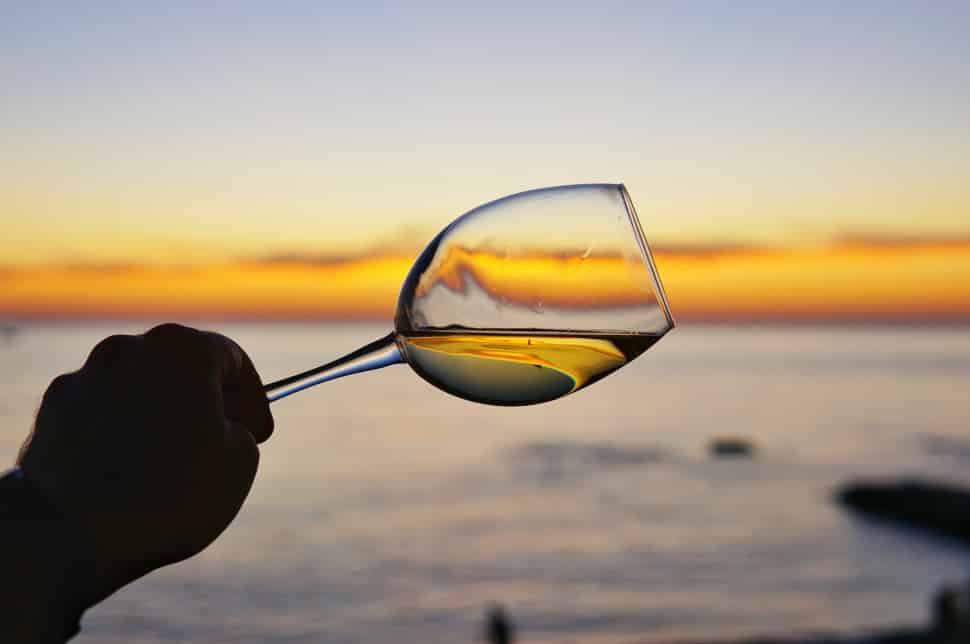
What is Chardonnay – and how does it taste?
What is Chardonnay? Chardonnay is the most enjoyable white wine grape to grow!
The Chardonnay grape is a green-skinned grape that originated in the Burgundy region of France. It’s a cross between two varieties of grape: Pinot Noir and the nearly-extinct Gouais Blanc.
The resulting Chardonnay grapes were a godsend. They are robust and fare well in a variety of climates.
They are also naturally neutral grapes, which means they take on the flavors and characteristics of the terroir where they are planted. Terroir is a wine term used to describe the soil and climate of the winemaking area.
The grapes were easy to grow, and the flavors were a dream to mold with winemaking techniques. And so, Chardonnay quickly spread from Burgundy to most major wine regions in the world, including the United States, Chile, Australia, New Zealand, and South Africa.
General Chardonnay tasting notes
In general, Chardonnay is a fruit-forward wine with medium-to-full body and lower acidity levels. It is known to be relatively dry. (This doesn’t mean it can’t be sweet – we will get into this later.)
But it can be difficult to describe how a Chardonnay wine tastes because no two bottles are the same.
Some Chardonnay wines have notes of lemon peel and crisp pear.
Others tends toward tropical flavors of pineapple and mango.
Some bottles are remarkably buttery, while others have an acidic zing.
Chardonnay from Sonoma County
A sip of Chardonnay can conjure notions of jasmine, honeysuckle, cucumber, and mint. It can also have notes of chalk, wet stones, mushrooms, caramel, and nutmeg.
How does such a diverse wine exist?
Let’s touch on what causes each of these unique flavor profiles. That way, you can identify the best bottles of Chardonnay for your tastes and answer the question, “is Chardonnay sweet or dry?” with confidence.
One of the most important factors in a Chardonnay wine’s taste is the winemaking process. That is, whether it is oaked or unoaked.
Let’s take a look at these very different fermentation processes for Chardonnay wine, and the flavor profiles of the wines that result from them.
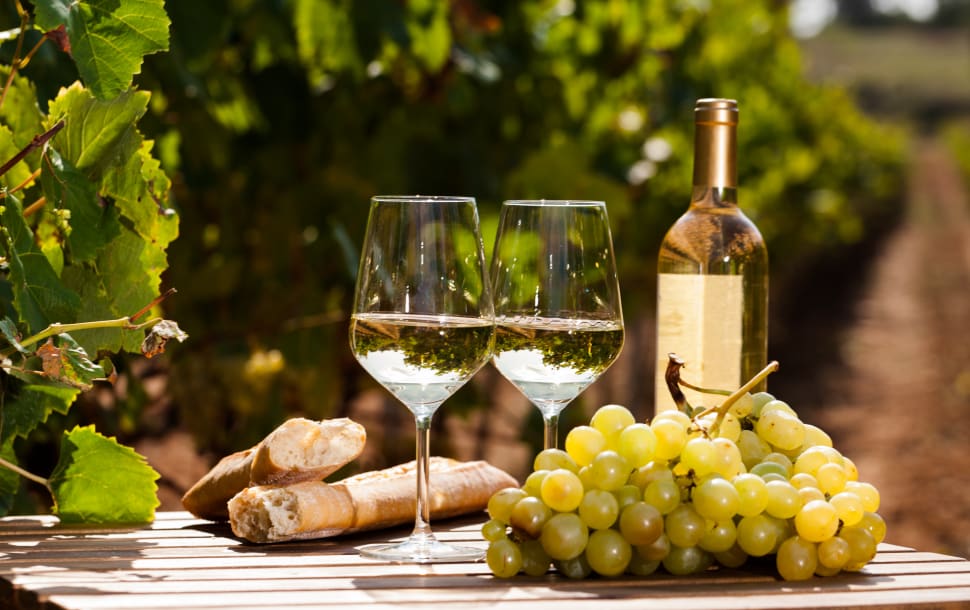
Oaked Chardonnay tasting notes
And oaked Chardonnay is one that has been fermented or aged in oak barrels. The uncontrolled temperature helps to cause malolactic fermentation, which affects the texture and flavor of the wine.
This style of fermentation is popular in Burgundy, Napa Valley, South Africa, Southern Australia, and Puglia, Italy.
Chardonnay that has been oaked will express warmer, creamier notes of butter, vanilla, pineapple, papaya, coconut, or baking spice. These notes can make the wine appear sweeter, and many people who think Chardonnay is sweet have only tried heavily-oaked versions.
But, despite this signature buttery sensation, an oaked Chardonnay is still quite a dry wine.
Unoaked Chardonnay tasting notes
The unoaked Chardonnay taste is quite different from that of its buttery sister. Unoaked Chardonnay has been aged or fermented in stainless steel tanks instead of oak barrels. This blocks the malolactic fermentation process and creates a drier, more acidic taste.
This style of Chardonnay is popular in cool climates like the Willamette Valley, Western Australia, Chablis, France, and Casa Blanca Valley, Chile.
Chardonnay that is unoaked will often taste more of citrus fruits like lime, lemon, or grapefruit, as well as tart green apple. It is distinctly bright and fruity – more akin to a Pinot Grigio or Sauvignon Blanc.
When comparing unoaked Chardonnay vs Sauvignon Blanc, the latter still has higher acidity and more herbaceous flavors, so it might appear more dry than the Chardonnay.
So does that mean even unoaked Chardonnay is sweet? Let’s take a look at where Chardonnay falls on the wine sweetness scale.
Is Chardonnay sweet? The wine sweetness scale
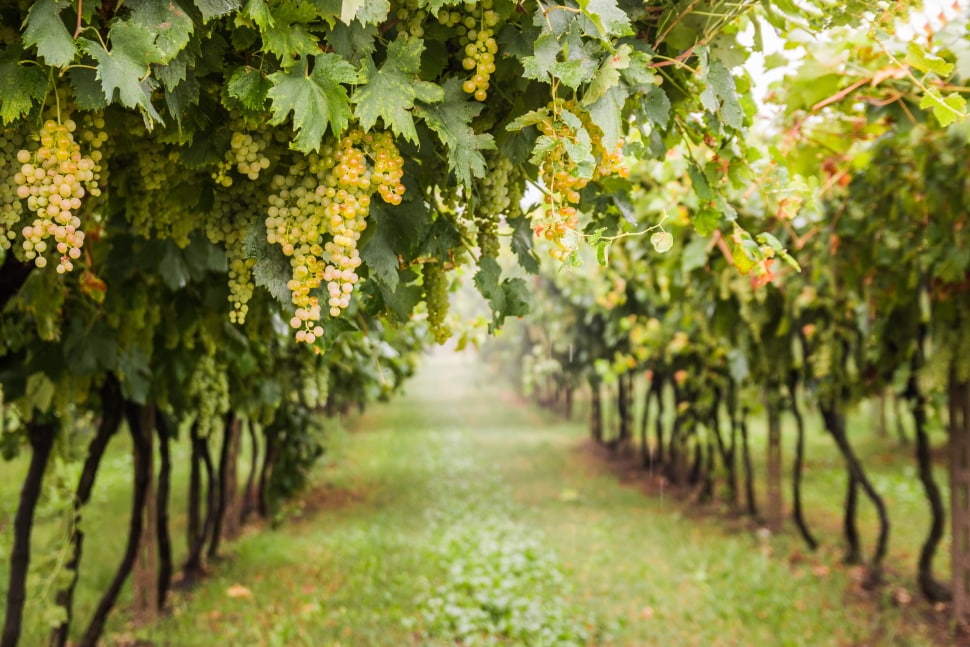
Is Chardonnay sweet? Not according to most people – and certainly not according to a wine sweetness chart.
Many people are falsely mistaken that Chardonnay is sweet like a Moscato or Rosé, but it is actually made in a dry style.
In the world of winemaking, “dry” simply means that the yeast has eaten most of the sugars in the grape juice to turn them into alcohol. Any sugar left over at the end of fermentation is called “residual sugar.” If a wine has less than 10 grams of residual sugar per liter, it is considered dry.
Chardonnay generally falls into this category.
In fact, Chablis, which is made from 100% Chardonnay grapes, is one of the driest white wines, as is Chardonnay-based Brut Champagne.
Let’s take a quick look at a white wine sweetness scale so you can see if Chardonnay is sweet or dry:
- Bone Dry (Less than 1 gram of sugar per liter): Muscadet, Brut Nature
- Dry (Less than 10 grams of sugar per liter): Chablis, Chardonnay, Pinot Gris, Sauvignon Blanc, Viognier
- Off-Dry (10-35 grams of sugar per liter): Early-harvest Riesling, Gewürztraminer wine
- Sweet (35-120 grams of sugar per liter): Late-harvest Riesling, Barsac, Sauternes, Muscat
- Very Sweet (More than 120 grams of sugar per liter): Sherry, Ice Wine
As you can see, Chardonnay is a dry white wine, but that doesn’t mean sweet Chardonnay doesn’t exist. Chardonnay grapes can be made into anything from a bone-dry wine to a sweet dessert wine.
Even if it is made in the dry style, there are several factors that can make you perceive that your Chardonnay is sweet.
What makes it so that a Chardonnay is sweet or dry? Let’s take a look at some of the external factors affecting your bottle of wine.
Why is Chardonnay sweet or dry?

Sweetness means different things to different people. What is sweet to one person might not be to another – but that’s also one of the things we love about wine. It’s an incredible personal journey to discover your preferences.
The sensation of sweetness doesn’t always have to do with sugar content. It may have to do with the fruitiness, the alcohol content, a lower acidity, or the way the wine was made. Here are just a few of the things that may affect the sweetness of your Chardonnay wine.
Region
Because Chardonnay grapes are so expressive of their terrior, regional variations play an essential role in the flavors of Chardonnay wine.
Cool climate Chardonnay will typically be more acidic and lighter-bodied. These Chardonnay wines tend toward citrus or pomaceous fruit flavors and minerality, and the lighter alcohol content makes them elegant and refreshing on the tongue.
Some regions where this style is common include Burgundy, Champagne, Sonoma Coast, Willamette Valley, Tasmania, New Zealand, Northern Italy, Germany, Austria, and Chile.
Warm climate Chardonnay is very different indeed. It has higher alcohol content, lower acidity, a fuller body, and bold tropical fruit flavors of guava, yellow peach, pineapple, passionfruit, banana, or mango.
Because of the lower acidity and higher alcohol content, it may appear that your Chardonnay is sweet. The opulent fruit flavors can also give this impression of sweetness.
You can find this style of Chardonnay in Southern Italy, South Africa, South Australia, and much of Spain and California.
Winemaking techniques
One of the biggest influences on whether Chardonnay is sweet is the winemaking process. The type and size of the barrel is important. But the amount of time the wine spends in it and the fermentation choices of the winemaker also play a significant role in the resulting flavors.
If the winemaker chooses to oak their Chardonnay, it may appear that the Chardonnay is sweet. The malolactic fermentation will produce a buttery mouthfeel and notes of vanilla, caramel, or baking spices. This can lead to a remarkably desert-like quality, even if the wine is dry.
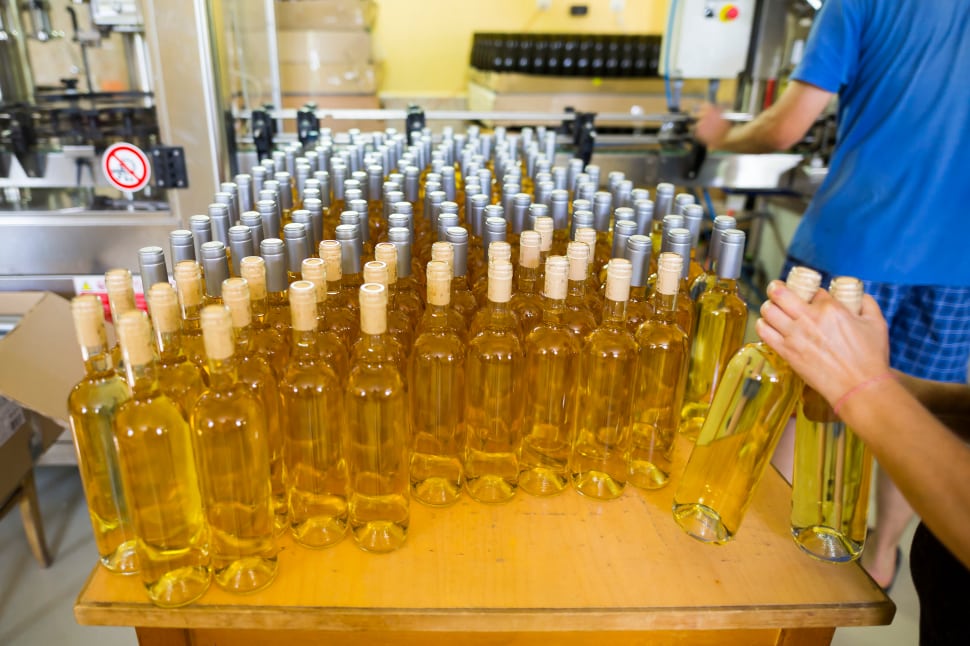
The longer the Chardonnay spends in oak, the stronger these secondary flavors will become. The sugar compounds present in the wood will slowly be extracted into the wine, making it appear sweeter and sweeter.
In addition, some winemakers will actually add sweeteners and other ingredients during the winemaking process. This could be to extend the wine’s shelf or could be to mask the low quality of their wine grapes. You certainly don’t want your wine to be sweet because of this!
It’s important to find winemakers that are transparent about their processes and produce wine of a high caliber.
If you’re looking for a very dry Chardonnay, you might wish to try an unoaked one. Temperature-controlled stainless steel barrels stop the malolactic fermentation process, making unoaked Chardonnay wines more sharp, mineral, acidic, and refreshing.
Temperature
Just like any white wine, Chardonnay should be served chilled. That’s because if the wine is too warm, the flavors will be muddled, and the alcohol will be front and center.
A higher level of alcohol can make a wine appear sweeter, and so, if you serve your wine too warm, you may think your Chardonnay is sweet.
Conversely, if you serve your wine too cold, you won’t be able to taste all the beautiful nuances in your glass. We recommend serving it at a temperature between 50–55 °F. You can chill it with a 30-minute ice bath or a few hours in the fridge.
Harvest time
The time of harvest can also affect the sweetness of your wine. The longer a grape is left on the vine, the higher sugar content it develops and the lower the acidity gets. Vintners in warmer regions often choose to let Chardonnay grapes ripen fully before harvesting.
With late harvest, the once-green grapes turn golden-yellow, and the resulting Chardonnay is sweet in comparison to other Chardonnay wines. It will taste less acidic, and more fruity and tropical, so even if the residual sugar is still low, there will be hints of sweetness on your palate.
An early-harvest Chardonnay, by contrast, will appear more tart and dry.
How to find the perfect Chardonnay wine for you
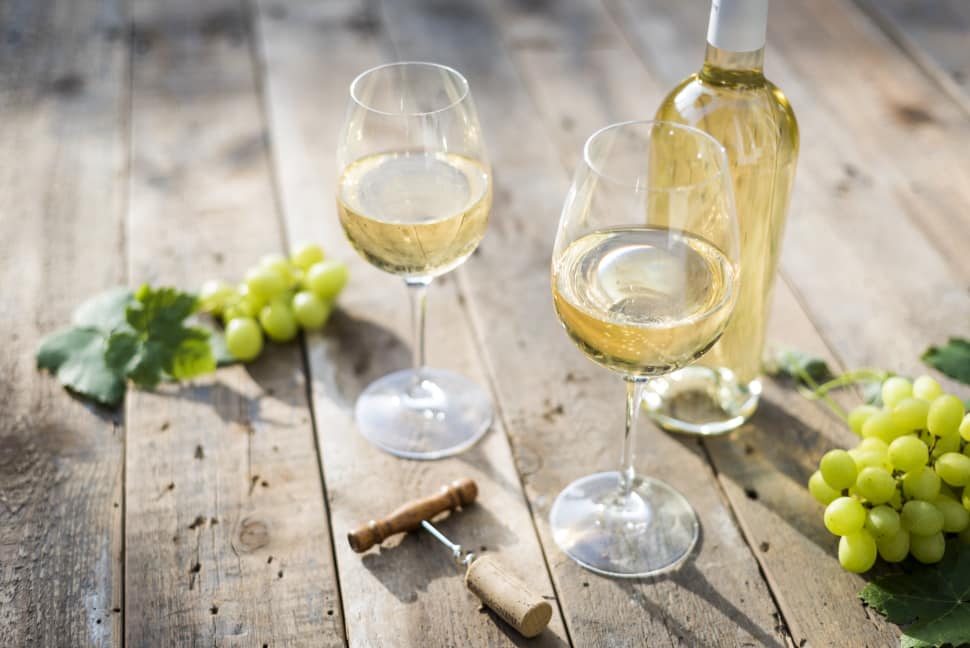
With over 25% of Americans enjoying Chardonnay on a regular basis, you know the varietal is doing something right. So now you just have to find the right bottle for YOU.
One bottle of Chardonnay is incredibly different from the next, which can make it intimidating to find a bottle you like. But it also means that once you understand your preferences, you will absolutely be able to find a Chardonnay wine that suits them.
If you are hoping your Chardonnay is sweet, you might want to try an oaked, warm climate or late-harvest Chardonnay wine.
If you want a distinctly dry and acidic Chardonnay, you can try a cool climate, unoaked variety.
Or, you might like to try an artfully balanced Chardonnay like the Chardonnay wine from Halleck Vineyard.
Our Chardonnay tips its hat to Old World styles from Chablis, France. It has none of the heavy butteriness that you would expect from an oaked wine – it has been oaked just long enough to round out the mouthfeel.
Our Chardonnay has spent most of its time in stainless steel. Therefore, it has crisp acidity, ample minerality, and a hint of salinity on the back of the palate. With a delicate nose of green apple and white flowers, and a taste of tart citrus, apple, and pear, this Chardonnay is sure to be a crowd-pleaser.




